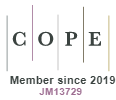Viewscape Assessment Framework for Protecting the Views of Sacred Monuments: Comparative Study of Srirangam and Thanjavur Religious Towns
DOI:
https://doi.org/10.15415/cs.2014.12005Keywords:
Viewscape Assessment, Sacred monuments, View PreservationAbstract
Sacred monuments represent layers of evolving traditional forms of architecture and city building that have together created a sense of place in our historic cities. Among the various sacred monuments Gopurams and Vimanams are significant landmark structures which form the image and identity for the historic temple towns of South India. Treating temple Gopuram and Vimanam as objects of worship inspired and influenced a variety of sacred activities and rituals performed in places around them. These sacred monuments have been built to be viewed and worshipped from far as well as near. The Gopurams, which once stood in centre of the settlement and dominated their surroundings, are now in danger of losing their visibility due to a variety of elements that obstruct the view. In the above context it is attempted to study the visual relationship between the sacred monuments and the places from where the views are available, so as to identify the most important views for protection. For this purpose, a review of literature related to assessment of quality views was undertaken. In order to protect the most important views, a ‘Viewscape Assessment Framework’ was used to assess the factors which affect (a) quality of views and, (b) quality of place from where the view is available The viewscape assessment framework was applied in case of two important sacred monuments with differing visual characteristics. Major findings of the study reveal that the significance of view of the sacred monument depends on viewing location, its physical characteristics, number of potential viewers, background and foreground elements of the viewscape. This study also emphasizes the use of ‘View Assessment Framework’ for identifying and protecting the views of sacred monuments.
Search Keywords for This Page
Srirangam temple aerial view, Srirangam rajagopuram, Srirangam to thanjavur, Srirangam temple layout, Ranganathaswamy temple, Raja gopuram, Srirangam temple height, Srirangam temple top view, Vimanam in temple, Viewscape, Srirangam temple gopuram, Thanjavur to srirangam, Srirangam to thanjavur distance, Thanjavur gopuram, Srirangam gopuram images
Downloads
References
BACON, E. (1967) Design of Cities. London:Thames and Hudson,
BALASUBRAMANIAM, K. (1994), “Thanjavur: AD 600-1850”, Thanjavur: Thiruvaduthurai Adinam Publication. (Language: Tamil).
BALASUBRAMANIAM, K. (2004). ‘Gopurams Kalai Marabu’ Traditional. Thanjavur: Koirkalangium. (Language: Tamil)
BENEDIKT, M. L. (1979) To take hold of space: isovists and isovist fields. Environment and Planning B. 6. p. 47 - 65 http://dx.doi.org/10.1068/b060047
BURCHER, L. (2005) ‘Urban Character and Viewscape Assessment’, paper presented at ISoCaRP congress. [Online] Available from: www.isocarp.net/Data/case_studies/643.pdf. [Accessed: 23.11.2012]
BUREAU OF PLANNING PORTLAND (1991) Scenic Views Sites and Corridors, Scenic Resources Protection Plan. Oregon: Bureau of Planning Portland
CITY OF AUSTIN (1983). Capitol View Preservation Study. [Online] Available from: https://transformgov.org/Documents/Document/Document/301744 [Accessed: 14.10.2012]
CITY OF SEATTLE (2001) Seattle view protection policy, volume 1, Space Needle – Executive report & recommendations. Seattle: City of Seattle.
CITY OF VANCOUVER (1997) Special Council Meeting Minutes: Downtown Vancouver Skyline Study. [Online] Available from: http://www.vancouver.ca/ctyclerk/cclerk/970407/skyline.htm. [Accessed: 17.01.2013]
GREATER LONDON AUTHORITY (2008) Supplementary Planning Guidance -- London View Management Framework (LVMF). [Online] Available from: http://www.london.gov.uk/priorities/planning/supplementary-planning-guidance [Accessed: 17.01.2013]
LEBLANC, F. (2008) ‘World Heritage: Defining and Protecting Important views’ paper presented at Round Table, Canada Research Chair on Built Heritage, Montreal. [Online] Available from: http://www.icomos.org/fleblanc/publications.html. [Accessed: 03.01.2013]
MAZUMDAR, S., and MAZUMDAR, S. (2004). Religion and Place Attachment: A Study of Sacred Places. Journal of Environmental Psychology. 24. p. 385-397. http://dx.doi.org/10.1016/j.jenvp.2004.08.005
SINGH, R. P. B. (1993) Introduction: The Layout of Sacred Places. Architecture & Behaviour. 9(2). p.161-162.
THIEL, P. (1961) A sequence experience notation for architectural and urban space. Town Planning Review. 32. p. 33- 52.
ZACHARIAS J., (1999) Preferences for view corridors through the urban environment, Journal of Landscape and Urban Planning. 43. p. 217-225.
Downloads
Published
Issue
Section
License
Articles in the Journal of Creative Space (Creat. Sp.) by Chitkara University Publications are Open Access articles that are published with licensed under a Creative Commons Attribution- CC-BY 4.0 International License. Based on a work at https://cs.chitkara.edu.in. This license permits one to use, remix, tweak and reproduction in any medium, even commercially provided one give credit for the original creation.
View Legal Code of the above-mentioned license, https://creativecommons.org/licenses/by/4.0/legalcode
View Licence Deed here https://creativecommons.org/licenses/by/4.0/
 |
Journal of Creative Space by Chitkara University Publications is licensed under a Creative Commons Attribution 4.0 International License. Based on a work at https://cs.chitkara.edu.in/ |







